In a powerful confluence of art, advocacy, and heritage, the Pakistan National Council of the Arts (PNCA) and Nomad Gallery unveiled "Rekindling:
In a powerful confluence of art, advocacy, and heritage, the Pakistan National Council of the Arts (PNCA) and Nomad Gallery unveiled “Rekindling: The Kalash Narrative”, an innovative residency and a group exhibition. More than just an exhibition, this collaborative endeavor, which ran from April 23rd to April 30th, 2025, served as a vibrant testament to the enduring spirit and rich cultural tapestry of the Kalash people, one of Pakistan’s most distinctive indigenous communities.
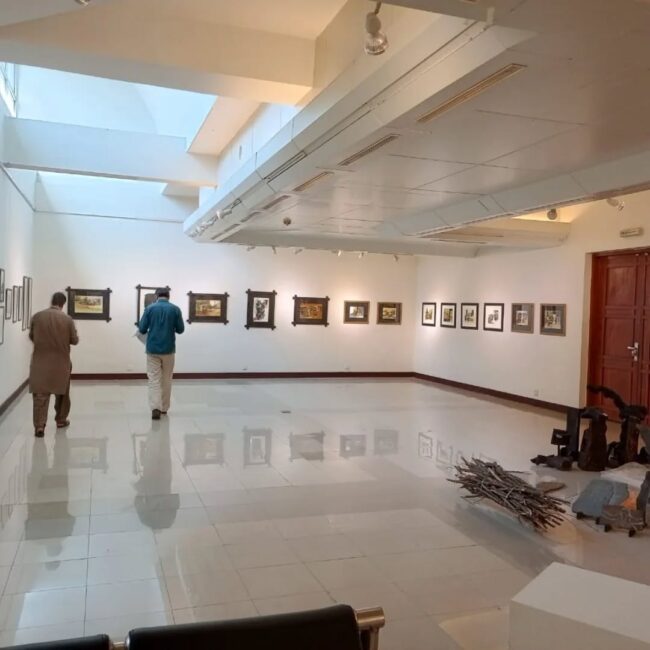
The Kalash people have a unique culture rooted in polytheistic beliefs and ancient traditions, deeply intertwined with their religious practices and festivals. They are a small indigenous group residing in remote valleys of Chitral, Pakistan, and are known for their unique culture evident from in their homes, costumery, jewelry and their close-knit social structure. According one Kalash-tradition, their ancestors migrated “some centuries ago” to Chitral Valley from the Waigal Valley, of Nuristan Province, Afghanistan. Another tradition claims descent from the armies of Alexander who were left behind from his armed campaign, though no evidence exists for him to have passed the area. With a population of just 3000 or so settled in three remote villages of Birir, Bumburet, and Rumbur, the Kalash culture face numerous threats, including forced conversions to the dominant faith, land occupation, deforestation, impact of climate change on their habitat, and the influences of the surrounding culture. Once a Kalash abandons his or her faith, they are not permitted to live in their community. Women have to stop wearing the long black robe often decorated with flower arrangements in neon threads and hand-woven belts. They embellish this with beads, cowry shells, buttons and metal ornaments, and wear headgear called shushat. Formal headgear called kupas is worn on special occasions. On the occasion of Lawak Baik festival, men dress up like women and women dress up like men. As a fast-disappearing culture it is important to not only actively safeguard the community but also document and celebrate this unique culture.
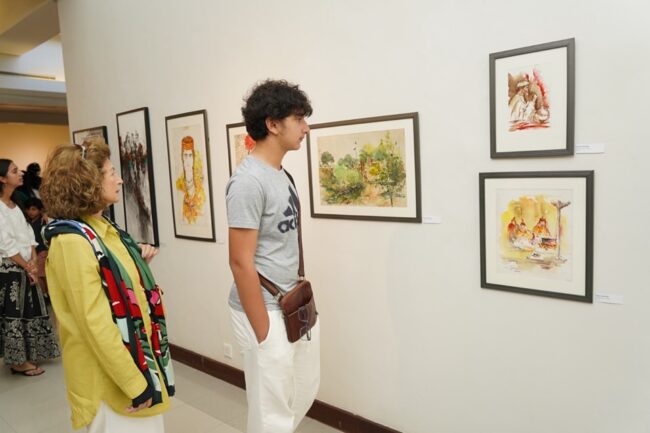
Rekindling The Kalash Narrative exhibition was inaugurated by Senator Sherry Rehman who lauded it as “vital work of cultural preservation and indigenous storytelling,” was the culmination of a unique three-part residency. Visionary curator Nageen Hyat, the founder of Nomad Gallery and a dedicated rights activist and filmmaker, spearheaded this intensive program, fostering a deep engagement with the Kalash traditions and the contemporary challenges faced by this unique community nestled in the Chitral valley.
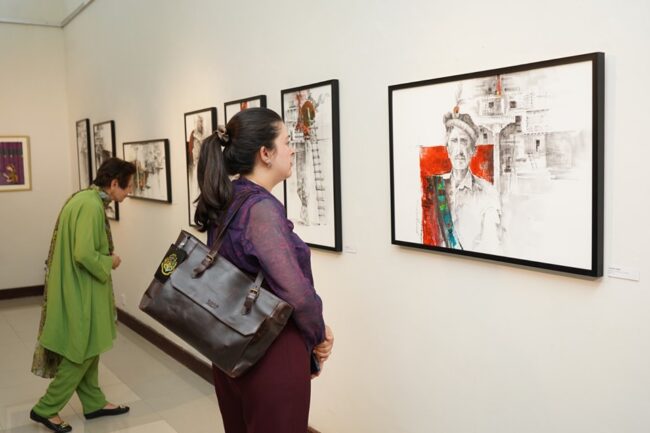
“Our aim is to preserve and promote the cultural heritage of the Kalash Valley, its beauty, and introduce its significance to a wider audience,” explained Nageen Hyat, whose commitment to Pakistan’s cultural narratives has been a hallmark of Nomad Gallery’s over 40 years of promoting art, film, and crafts for community empowerment in the capital.

The exhibition itself was a kaleidoscope of artistic interpretation, showcasing the profound works of six accomplished artists. Their diverse media and perspectives painted a multifaceted portrait of Kalash life. Akram Dost Baloch, a well-known artist from Balochistan, presented powerful images reflecting social struggles, challenges of gender equality, and the unwavering resilience that defines oppressed communities. Respected portrait and impressionistic artist M. A. Bhatti delved into potent cultural and social themes. His canvases echoed of unspoken narratives. Artist and writer Ahmed Habib focused on the transformative potential of education for Kalash women. His painting, “Unwritten Chapter,” vividly illuminated the uncharted paths education can unlock, a testament to the determination of Kalash women.
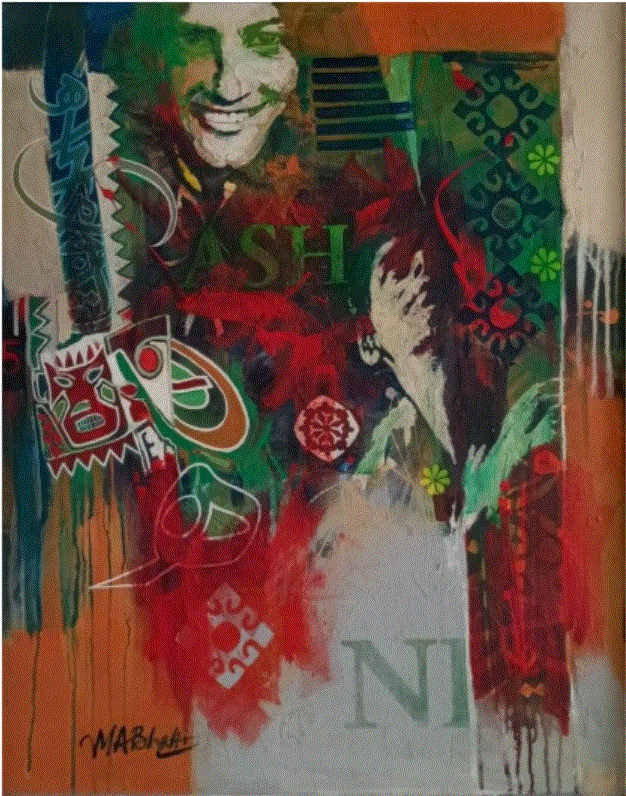
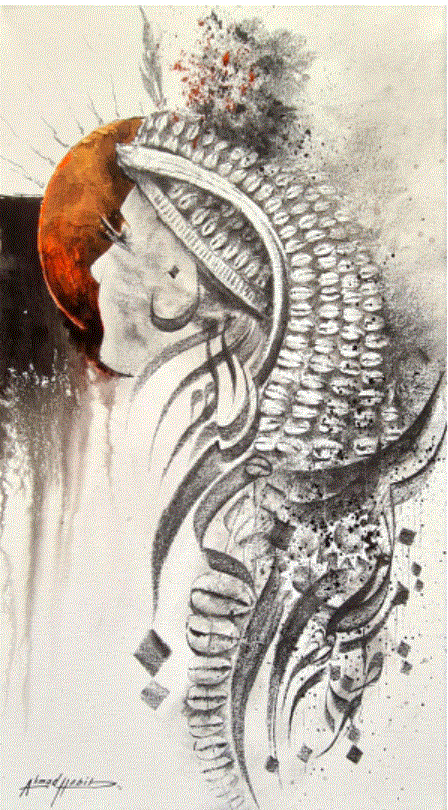
Watercolorist Riffat Khattak, deeply moved by a previous visit to the Kalash Valley, captured its breathtaking landscapes and the vibrant traditions of its people, his paintings a testament to their unique customs and way of life. His water colour pieces capture the unique costume and headgears of Kalash women with all their magnificence.
Contemporary miniature artist and Assistant Professor Samreen Asif meticulously explored Kalash women’s narratives and cultural heritage. Her residency work saw her translate her traditional miniature style onto canvas for the first time, experimenting with scale while retaining the essence of herbal pigments and wasli sheets. Her pieces delved into themes of care, freedom, resilience, and the delicate balance between tradition and modernity, often using the valley’s birdlife and spiritual ambiance as motifs.
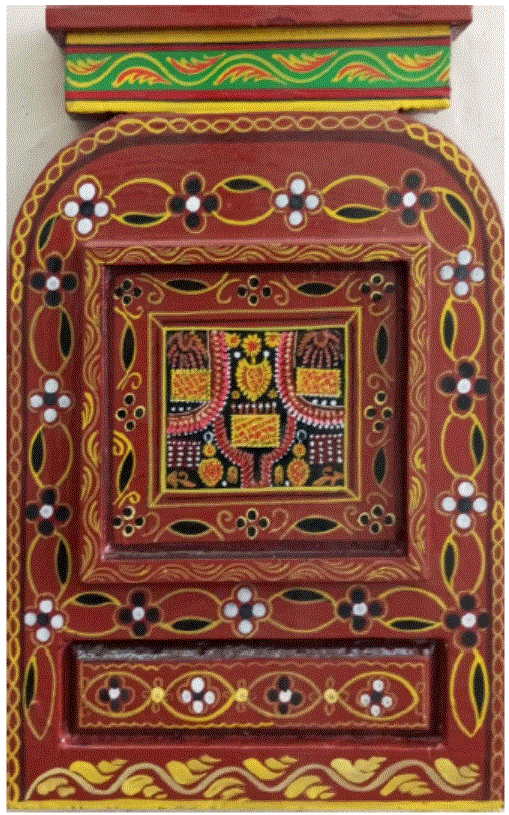
Artist-engineer Ejaz Khan showcased striking stone carvings inspired by Kalash deities and architecture. He painstakingly sourced Chashmi stone, similar to that found in the Kalash Valley, to carve figures of religious goddesses and cultural icons of Kalash, repurposing neglected slabs to preserve a heritage on the verge of extinction.
The tradition of making wooden funerary statues of the ancestors, locally called a gandao, still continues in the three Kalash valleys. Kalash people will make these wooden sculptures and leave them on the graves of their deceased. There was a time when the Kalash cemeteries were replete with gandaos. Today, this art form is not as widely practiced as it was done in the past because there are very few gandao artists left. Due to frequent stealing, people have stopped making the gandaos and with that this ancient art has almost vanished.
At PNCA, complementing the visual arts exhibition was the screening of “Rediscovering Greater Chitral,” a documentary produced by Nageen Hyat for PTV Global. This film provided intimate insights into the Kalash community, their traditions, and the evolving dynamics of their cultural landscape, further enriching the audience’s understanding and creating a precious repository.
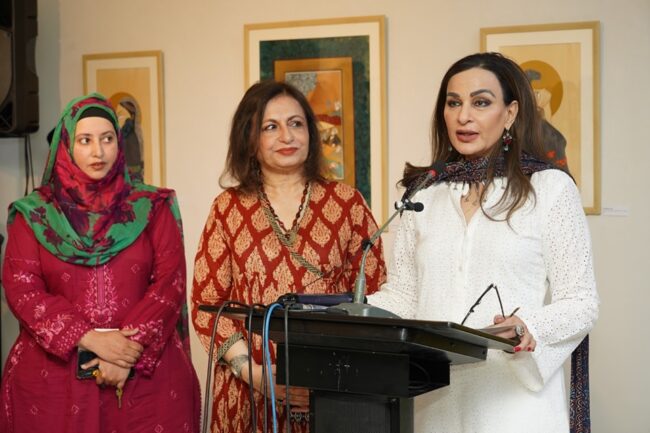
For Nageen, “Rekindling: The Kalash Narrative” is her contribution to raise awareness in the mainstream art and cultural enthusiasts about the Kalash community – a living treasure of our times. She hopes that this initiative will play a part in documentation and celebration of this unique community, especially as environmental and social challenges increasingly impact Pakistan’s northern regions, making artistic documentation “not just aesthetically valuable but historically essential”.
“Rekindling: The Kalash Narrative” was more than an exhibition; it was an invitation — a call to witness, to learn, and to engage with a culture that continues to shine brightly. It stood as a powerful example of how art can bridge understanding, preserve memory, and empower communities, ensuring that the unique voice of the Kalash people continues to resonate for generations to come.